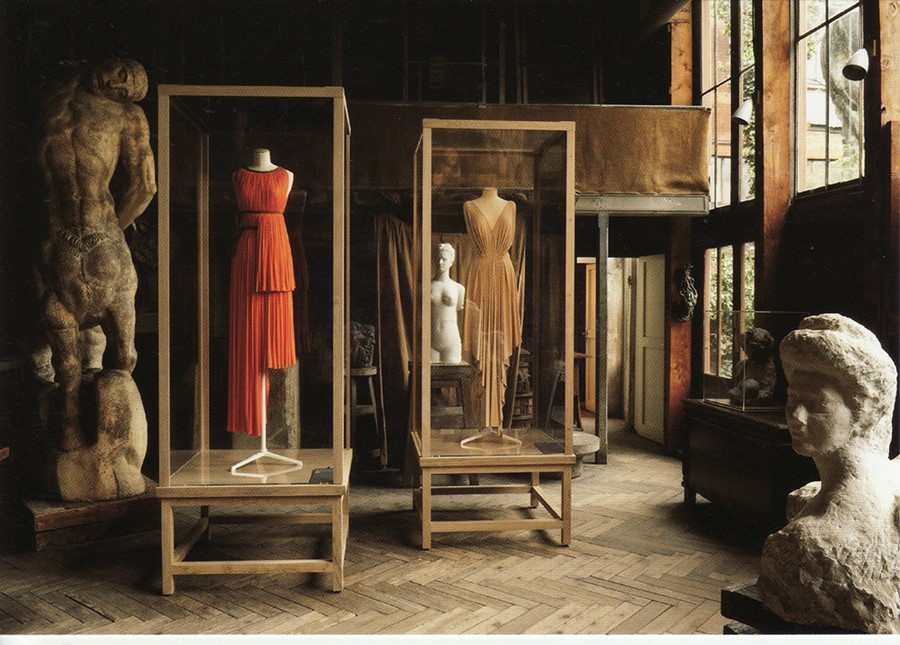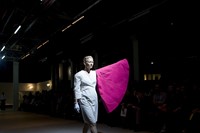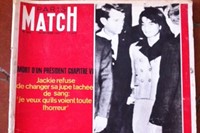An Intellectual Fashion meets Olivier Saillard, acclaimed Director of the Musée de la Mode de la Ville de Paris to talk fashion, politics, poetry and elegance
Olivier Saillard has been the Director of the Musée de la Mode de la Ville de Paris since 2010. In this position, he oversaw the reopening of the Palais Galliera in September 2013 with the acclaimed and long-expected retrospective of Azzedine Alaïa. Amongst his outstanding track-record as a curator, he spearheaded the development of the Musée de la Mode in Marseille in the 1990s, under the supervision of Bernard Blistène, now the Director of the Musée National d’Art Moderne – Centre Georges Pompidou. Since then, he has directed the fashion program of the Musée des Arts Décoratifs, and organised some highly-noticed exhibitions such as Madame Grès (Musée Bourdelle, 2011) Comme des Garçons White Drama in 2012 and Les années 50 in 2014. He is the author and editor of several books, and a noted poet and performer – alongside some of his long-standing conversation-partners, such as the actress Tilda Swinton.
How would you connect fashion to elegance?
Fashion is a phenomenon that can be orchestrated by the industry and by the rules of economy, as well as by the poetic coincidence of a couturier and a designer with his or her time, and then by a system of mirrors – a real mirror in front of which a few singular individuals dress up, and then a metaphorical mirror that brings their image to a crowd which, with its number and harshness, fixes fashion and thereby announces that it is soon to be old-fashioned. More than ever, elegance is setting itself free from the movements of fashion. Singularity, as fashion articulated it as a principle, a system, forces elegance to find others ways to exist than through appearances. In the 1980s, we made difference a standard, and singularity an abidance to fashion. Today, it is difficult to escape these obligations. Not being fashionable is a sign of fashion in its own right. Elegance therefore is located in the non-chosen resistance to fashion, in allure. I believe that someone who would tomorrow wear a worn-out piece of clothing (naturally “worn-out”, not “holed” according to the standards of the fashion industry), or a dirty one, as the dandys used to do, will be the most elegant person one could see. What is naturally worn-out and what belongs to the territory of dirt is not coveted by fashion, which is motivated by the syndrome of novelty. Elegance is also today a pure matter of body language and of gestures. Clothing must dissolve within it up to the point when it is not visible anymore.

What is the role of history and art history in your conception of fashion?
Art history has taught me how necessary it is to know the past of your own discipline in order to pursue it or creatively take it down. Fashion is no exception to the knowledge any artist working today needs to have of his or her own discipline. It is not enough to be only an artist: you also need to be the critic of the art you engage with, or you are simply working in entertainment and décor. Whether we are talking about artists, couturiers or architects, I prefer the type that acts plastically rather than theorise, or is agitated with the search and pursuit of the present.
"More than ever, elegance is setting itself free from the movements of fashion"
Would you describe fashion as language and a discourse, as Roland Barthes did?
The overproduction of clothes per year has never reached throughout history the overflow we are currently experiencing: 365 shows, roughly, per Fashion Week, with four Fashion Weeks every year in Paris, New York, Milan and London, meaning 13800 new silhouettes presented on the podiums on every season. This imperative of fashion is inflected to clothing, and to the body as well, which is transformed, requested to be more muscular, more tanned, more aestheticized than it ever was. It forces them to become part of a language. However, clothing is not at all anymore the social, worldly, economic reflection of today’s individual it once was: it is possible to be a successful investment banker while wearing jeans and soccers, which would have been impossible before the 1960s.
The word “intellectual” was coined at a time of great political distress. Does fashion have a political role? And in which way?
I don’t think that fashion, since the 1980s, occupied a political, progressive territory. Perhaps, even, once could argue that, since the Punk movement, which I consider to be the last manifestation of the underground, fashion has not activated this virtuous balance that goes from the depth of the underground to popular cultures. I actually think that it is essential to occupy the territory of provocation in order to provoke a visual, cultural disruption. I am sad to see that it has been more than twenty years that no fashion effect has come from the deep roots of counterculture. Fashion has become drawn to podiums, shops, selling facilities.
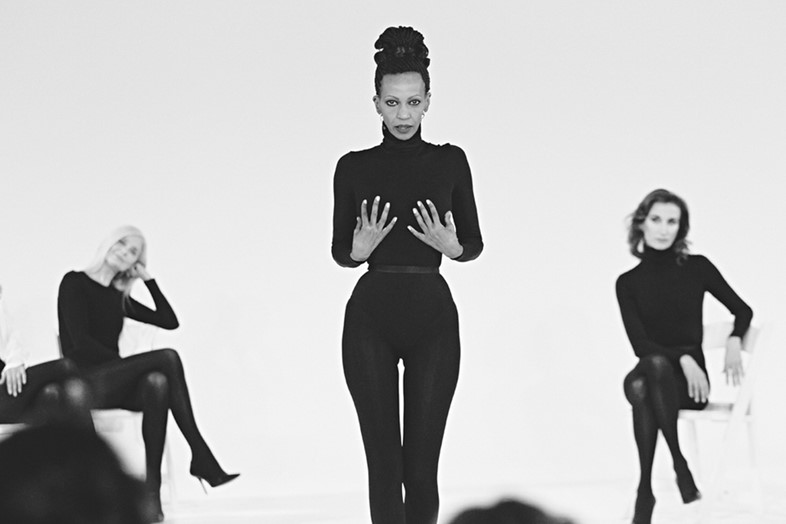
What does fashion have to do with intellectuality?
Until the emergence of the Japanese designers of the 1980s, we used to think of fashion and clothing in terms of elegance, couture, and tones. When Issey Miyake came to Paris, and after him Rei Kawakubo and Yohji Yamamoto, it then became possible to see fashion for its spirit, its intent. Clothes could be considered as dependent on and independently from the body. They carried within themselves a form of poetry, a philosophy of life, a way to behave that had nothing to do with their price anymore. With that plasticity came a form of intimacy, a vision, a way of reading things, in which seduction was not the only term.
Would you relate the concept of fashion to the one of style?
Style comes from a form of self-oblivion from fashion itself.
"The greatest couturiers are authors in their own right"
You are passionate about poetry, and about costume history. What is the connection between the two?
I keep thinking that the greatest couturiers are authors in their own right. They keep fascinating me with their ability to “write” on the sleeves of a jacket, on the hem of a dress, the obscure phrases of fashion. I like the idea that a couturier finds a style while cutting with his scissors, in the same way as a writer would do with a pen. Alaïa has his very own form of writing, in the same way as Rei Kawakubo has her own vocabulary. There is no dictionary yet to encompass their words – which, by the way, are the same as the ones we use about literary writing. It is a fabric, a thread, forms. Everything becomes different with the practice of their skills. What connects poetry and costume history probably has to do with those who live in it. These clothes, our twins tired of ourselves, inspire literature and poetry not as much because of their shapes or the décor they symbolise as because of the concave of convex mirror with which they present us an image of ourselves.
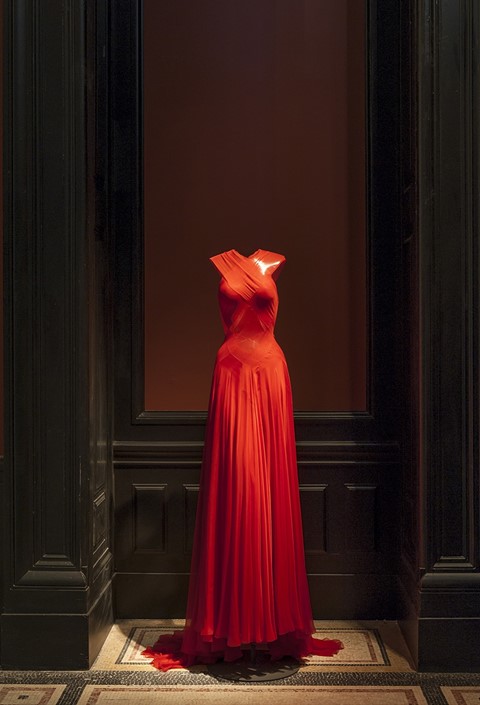
There seems to be a connect between fashion as a system and clothing as you see it in the streets. What does that discrepancy say of the world in which we live?
The situation is more ambiguous than that. There is a powerful feeling of “all fashionable” and a lack of signs of what is ahead in the history of fashion. You can build a fashionable look for any price. You can also model your body and feature nudity as a form of dress. We made singularity and difference the standards of the latest decades. Everybody is different, everybody can have tattoos, piercings, be dressed the way they want (or don’t want). There is, in the marriage with fashion, a form of self-abandonment from fashion by fashion itself. That is its principle. Once everybody has taken it on, then fashion loses its very meaning. Discretion, it seems to be, is the right choice for the future.
In two weeks Donatien will interview the architect Sophie Hicks.
